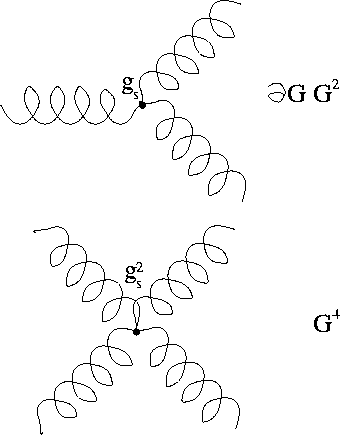Since there is evidence for Colour charge one may speculate if this is the 'charge' the strong interaction is coupling to.
One starts with the Dirac equation for a free quark

Since there are three different Colour charges (red, green, blue) there are three different basis states which can be represented as



Proof: To prove that the theory is invariant under local SU(3)C transformations




The Lagrangian after the introduction of the gauge fields is given by:


CONSEQUENCES:
1) GLUONS ARE CARRYING COLOUR
The non-abelian character leads to the fact that the gauge bosons themselves are carrying colour charges.
As consequence, gluons are self-coupling. This can be easily read off the QCD Lagrangian containing terms proportional to 'G3' and 'G4', respectively.

2) UNIVERSALITY OF THE COUPLINGS
In contrast to the abelian gauge theory, QED, non-abelian gauge theories, as QCD, contain in the gauge transformation explicitely a term proportional to the coupling constant, gs.
That is, if fermions are coupling to the gauge fields at all (in this case, the gluons) they are coupling all with the same strength! Otherwise, the theory would be inconsistent. This is not the case e.g. in QED where charged leptons and quarks have different electrical charges.
This 'explains' also lepton universality in weak interactions. In turn, the fact that lepton universality is observed is already a strong argument that the underlying theory of weak interactions has to be a non-abelian gauge theory if it is a gauge theory at all!